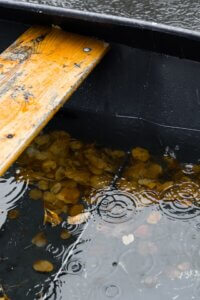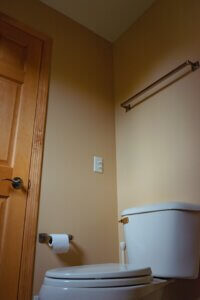Understanding the Severity Levels of Water Damage Restoration
Understanding the Severity Levels of Water Damage Restoration
Summary
The article details the importance of understanding the severity levels of water damage, classified into four Classes based on extent and three Categories based on contamination. Immediate action and professional consultation are emphasised, especially for severe cases involving contaminated water. Steps in the restoration process, from water removal to final restoration, are outlined.
Water damage can strike when you least expect it, wreaking havoc on your home or business. It’s crucial to understand the severity levels of water damage to make informed decisions during the water damage restoration process. At the end of the day, your safety and the integrity of your property are paramount.
Classifying Water Damage: A Brief Overview
Before we delve into the specifics, it’s important to categorise water damage into Classes and Categories. Classes range from Class 1 to Class 4, depending on the amount of water and the types of materials affected. Categories, on the other hand, are divided into three types based on contamination levels. These classes and categories are highly important to the water damage restoration process.
The Significance of Water Damage Classes
Class 1: Minimal Water Damage
Class 1 involves minimal water absorption and affects only a small area. Typically, only non-porous materials like glass or concrete are affected. Speedy removal of water is usually sufficient for water damage restoration.
Class 2: Significant Water Absorption
In Class 2, the water has spread rapidly, affecting the entire room and porous materials like wood and carpet. Sub-floors and walls may also become saturated. This demands prompt and comprehensive water extraction along with dehumidification to prevent lasting damage.
Class 3: Extensive Water Intrusion
Class 3 represents severe scenarios where water has affected ceilings, walls, insulation, and sub-floors. It may have come from overhead sources and affected multiple levels. This class requires specialised extraction techniques and thorough drying methods as part of the water damage restoration process.
Class 4: Special Drying Situations
Class 4 requires advanced drying solutions because it involves materials that are hard to dry like hardwood, plaster, or stone. Here, the affected area often needs longer drying times and specific humidity levels.
Understanding Categories of Water Contamination
Category 1: Clean Water
This category involves water that poses no health risks, often coming from leaking faucets or supply lines. Immediate action is still required to prevent escalation to higher categories.
Category 2: Grey Water
Category 2, or grey water, contains contaminants that may cause illness. Sources include washing machines, toilets, and sump pumps. The use of protective gear is advised during water damage restoration.
Category 3: Black Water
Category 3, or black water, is hazardous and contains harmful bacteria and pathogens. This water often comes from sewage backups and flooding from rivers or streams. Specialised treatment is mandatory for this type of water damage restoration.
Immediate Actions for Water Damage Restoration
Contact Professionals: Immediate consultation with certified water damage restoration experts is crucial.
Safety Measures: Disconnect all electrical devices and evacuate the premises if Categories 2 or 3 water is involved.
Documentation: Take photographs and document the extent of the damage for insurance claims.
Water Removal: Employ pumps and vacuums to remove water based on the Class and Category.
Drying and Dehumidification: Employ commercial-grade dehumidifiers and air movers to expedite the drying process.
Cleaning and Sanitisation: This includes antimicrobial treatments to prevent mould growth, particularly crucial in Categories 2 and 3.
Restoration: The final steps involve replacing damaged materials and restoring the property to pre-loss condition.
Understanding the severity levels of water damage restoration allows for a more structured and efficient recovery process. Time is of the essence in such situations, and adequate knowledge empowers you to make the right decisions swiftly.
FAQs
How Quickly Should Water Damage Restoration Begin?
Time is of the essence when it comes to water damage. It’s recommended to begin the restoration process within 24 to 48 hours of discovering the damage. This prompt action can prevent further deterioration, minimise mould growth, and increase the likelihood of successfully restoring affected materials.
Is It Possible to Handle Water Damage Restoration Myself?
While minor water damage from a clean source may be manageable with do-it-yourself techniques, it’s advisable to consult professionals for more severe cases, especially those involving contaminated water (Category 2 or 3).
Will My Insurance Cover Water Damage Restoration?
Insurance coverage for water damage varies depending on your policy and the cause of the damage. It’s important to contact your insurance provider as soon as possible to determine the extent of your coverage. Documenting the damage with photographs and keeping records of all communication with the insurance company can also facilitate the claims process.
Why Choose AllAces?
AllAces Cleaning & Restoration has more than 35 years of industry experience, handling both domestic and commercial clients. Our IICRC-certified technicians are expert water damage restoration specialists with numerous other service offerings to improve your property and return to a pre-loss condition.
Trust the experts and contact the team or call 1800 00 10 10 today!



